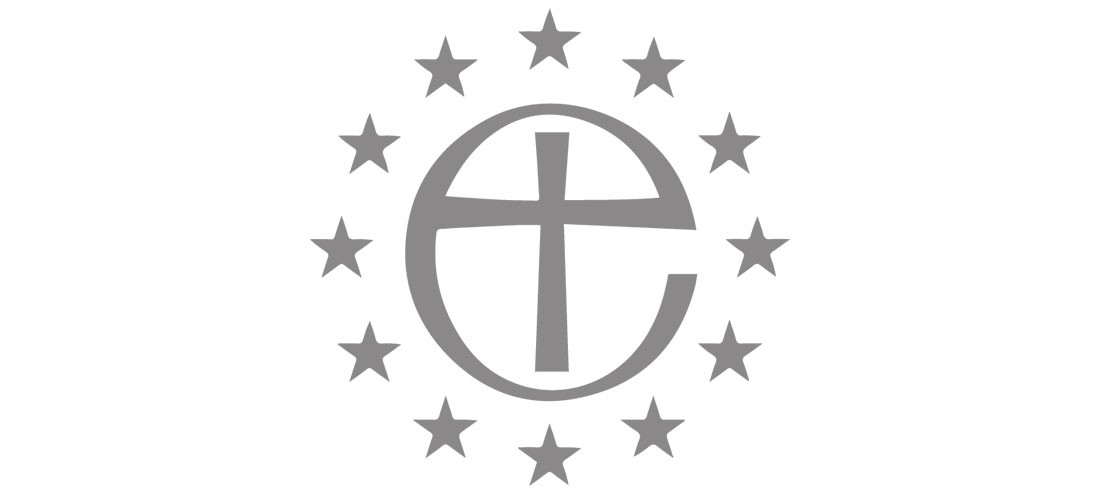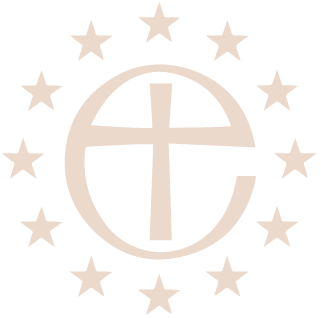
Trinity 6 – 28th July 2019 (Luke 11, 1-13)
Canon Leonard Doolan, St. Paul’s Athens.
On the top of the Mount of Olives Empress St. Helena built one of her basilica churches when she visited Jerusalem in the 320’s AD. With her son being the Emperor Constantine she had some real cash and clout behind her. She was a faithful woman, and wished to see the places where the most important and holy things happened in the life of our Lord. Jerusalem at the time was a bit of a slum, so with the arrival of the Dowager Empress, Jerusalem went through one of the largest real estate developments it had seen in centuries.
This basilica, one of several built by St. Helena, was visited by a pilgrim called Egeria in the AD380’s. The journal of her pilgrimage is still in existence, and she records the liturgical events in the holy city. The great doctor of the church, St. Cyril of Jerusalem, was the bishop at the time.
Her journal describes what is done on Holy Thursday, during the Great Week, or Holy Week as we call it. On a busy liturgical day she gives us this information:
‘… after they have all eaten, all go to the Eleona to the church wherein is the cave where the Lord was with his Apostles on this very day. There, then until about the fifth hour of the night, hymns and antiphons suitable to the day and the place are said, lessons too, are read in like manner, with prayers interspersed, and the passages from the gospel are read where the Lord addressed his disciples on that same day as he sat in the same cave which is in that church’.
This cave, and what remains of the basilica of St. Helena can be seen today, but there is a later Crusader church on the holy site, called the church of the Pater Noster. It is thought that the cave of the Eleona Church was frequented often by Jesus, and he may even have taught them how to pray what we call the Lord’s Prayer, or Pater Noster in Latin, or Pater Ymon, in Greek.
When I lead a pilgrimage to the Holy Land next year, this is one of the places we will visit. A lovely feature now is that in the courtyard all around this cave, beside the later Crusader church, are tablet after tablet of the Pater Noster translated into all the languages of the world, including the ancient and infrequently spoken dialect in Scotland called Doric.
A visit to this place is a Pentecostal experience. How so? Because all the languages of the world can be understood praying in the single language of faith. All prayer, in whichever language is directed towards the one God, and in prayer he unites our divisions, and heals our fractures. We should therefore address prayer urgently if we are to unite our increasingly polarized and secularized world – polarized because self- interest seems to dominate common good, and secularized because we are beset by the disruptive heresy of individualization, an unfortunate bi-product of the Western Reformation. Our diversity speaks as one in prayer; our individuation is reunited to the community in prayer.
We are possibly in that cave at the top of the Mount of Olives, when Jesus teaches his disciples ‘how’ to pray. Please note the context of this. St. Luke tells us that Jesus was already praying, and it is when he had finished his disciples ask for some helpful prayer hints. His response results in the most prayed words in the whole world. How many sermons could be preached, just on this prayer? In fact, I think I might lead a session of sermons on this later this year.
You could almost say that the Lord’s Prayer has at its very core the words of the Shema as quoted by Jesus. I preached about this a couple of weeks ago. “Hear, O Israel, the Lord your God is one Lord, and you will love the Lord your God with all your mind, with all your heart, with all your soul, and with all your strength; and your neighbour as yourself’.
He expands on this in the prayer, and offers us some words that we can helpfully hang our prayer life on.
God’s holiness; his kingdom; our need of him; forgiveness from him and from us; strength to resist evil. Such an alchemy of priorities will bring us close to God, and he to us, and his kingdom will come close.
Our Lord goes on to illustrate the prayer, and emphasizes in simple ways how prayer is answered. The Lord’s Prayer is answered by God when we are genuinely changed and transformed by it. When we no longer take the view that everything we are and everything we have belongs entirely and only to us; when we recognize that each of us is no longer the centre of the world. Anyone who is a parent will know that when a small child is growing up he or she thinks that the sole purpose of the rest of the world is to focus on that child. One priority of any good parent is to burst the bubble of this fantasy and to help the child to realize that we are in life all interdependent and interconnected. Sadly, of course, some adults just don’t get this. They live their adult lives with the self centred-ness of the little child.
Our Lord goes on to illustrate the prayer by drilling down into the quality of human relationships – how we engage with each other; honestly, decently, justly. Deep, quality relationships relatedness in love. If we want to be dealt with honestly, with decency, and with justice – then this is what we need to deliver to others. The reciprocity of forgiveness is referred to. If we wish to be forgiven, then we have to be able to forgive. Jesus gives some simple examples of fish and snakes, eggs and scorpions. If we can deal well and healthily with the needs and requests of others, how much more will God our Father grant to us the Holy Spirit when we ask in prayer.
So all of this is a truly Pentecostal (Spirit-filled) phenomenon. This universal prayer, written on so many tablets at the Church of the Eleona on the Mount of Olives, in every language in the world, is understood by everyone, because it conveys the one voice of humanity’s needs, in prayer to God our Father, whose name is holy.
How do we begin to approach prayer; where to start? It seems too much, and prayer is a challenge. ‘Knock and the door will be opened for you.’ Start here, and start now (if you haven’t started already). Before you leave this church this morning just look at the display board. On this, our Sunday School children have put together all the languages that are the first languages of members of our congregation here. Many languages, one prayer. Later in our Liturgy we will all have the opportunity to write our own prayer to offer up to God our Father. No –one will see it. God alone will know it – and know it he will.
Just think of that little cave and the request from the disciples that their Lord, and our Lord, should teach them to pray. ‘Lord, help us to pray.’


No Comments